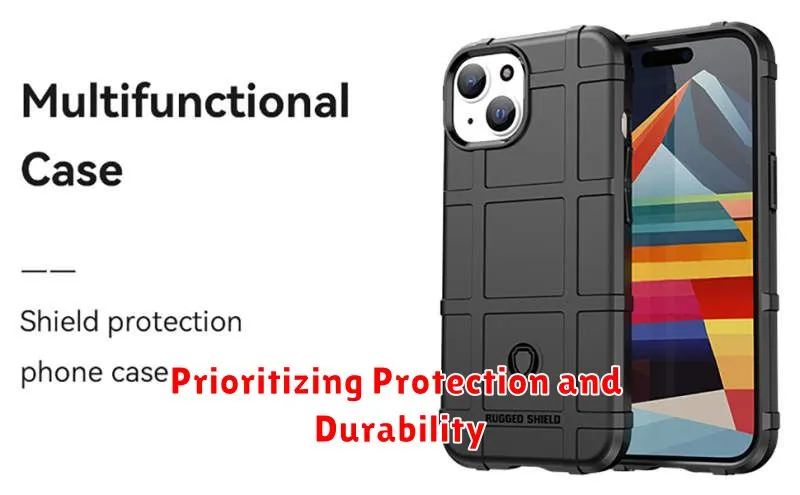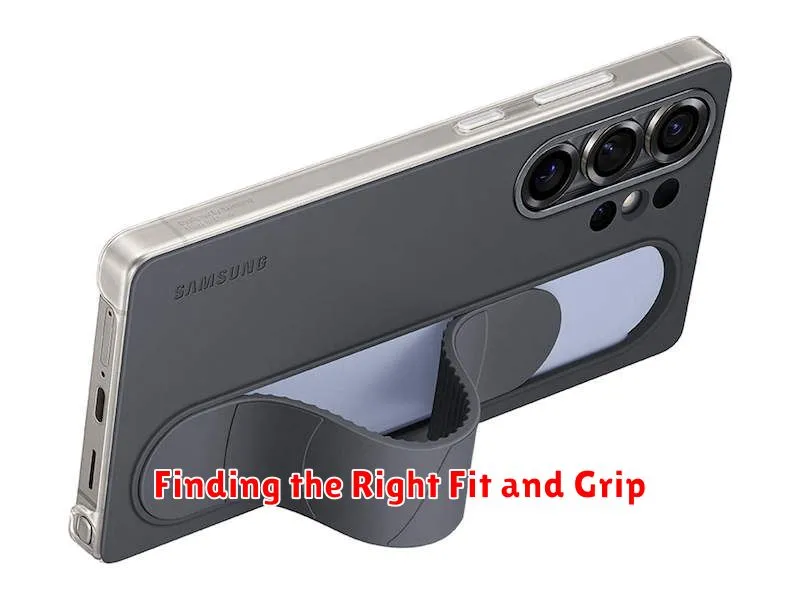Choosing the right phone case can be a daunting task. With so many options available, finding the perfect fit for your specific needs requires careful consideration. This article will guide you through the process of selecting the ideal phone case, taking into account factors such as protection, style, functionality, and budget. Whether you prioritize drop protection, a slim profile, or a wallet case design, understanding your priorities is crucial to finding the perfect fit.
From rugged cases built to withstand extreme conditions to stylish cases that complement your personal aesthetic, the market offers a wide array of choices. Navigating this landscape can be challenging, but by understanding the different types of phone cases and their respective features, you can confidently choose the perfect fit for your device and lifestyle. This guide will explore various phone case materials, designs, and functionalities to help you make an informed decision and find the perfect fit that balances protection and style.
Assessing Your Lifestyle and Needs
Before diving into the vast world of phone cases, take a moment to consider your daily routine and how you use your phone. Lifestyle plays a crucial role in determining the ideal case. An active individual who frequently uses their phone outdoors will have different needs than someone who primarily uses their phone in a controlled environment like an office.
Think about your activity level. Do you work outdoors, participate in sports, or lead a generally active lifestyle? If so, a rugged, protective case is likely a necessity. Alternatively, someone with a less demanding lifestyle might prioritize a slim, stylish case.
Consider your environment. Are you regularly exposed to dust, dirt, or water? This might necessitate a waterproof or dustproof case. Someone working in an office might prioritize a case that offers grip and protection against drops on hard surfaces.
Finally, think about your personal preferences. How important is aesthetics? Do you need extra features like a built-in wallet or kickstand? Answering these questions will help you narrow down the options and choose the perfect case for your individual needs.
Different Types of Phone Cases and Their Benefits
Phone cases come in a wide variety of styles, each offering unique benefits. Choosing the right type depends largely on your individual needs and priorities. Here’s a breakdown of common types:
Basic Cases
Snap-on cases are lightweight and easy to install, providing scratch and minor bump protection. Silicone cases offer good grip and shock absorption, while hard plastic cases are slim and durable, resisting scratches and minor drops.
Protective Cases
Rugged cases provide robust protection against drops, impacts, and even extreme environments. Wallet cases combine protection with convenience, incorporating slots for cards and cash. Bumper cases protect the edges of your phone while leaving the back exposed.
Specialty Cases
Battery cases extend your phone’s battery life. Waterproof cases offer protection against water damage, ideal for outdoor activities. Kickstand cases offer hands-free viewing.
Material Matters: Exploring Phone Case Materials
The material of your phone case plays a crucial role in its protective qualities, feel, and durability. Understanding the properties of various materials can help you make an informed decision.
Silicone: A popular choice, silicone is known for its shock-absorbing properties and soft, grippy texture. It’s generally affordable and comes in a wide array of colors.
Plastic (Polycarbonate, TPU): Plastic cases are lightweight, durable, and offer decent protection against impacts. TPU (Thermoplastic Polyurethane) is a flexible type of plastic offering enhanced shock absorption.
Leather: Leather cases offer a sophisticated look and feel. They provide a degree of protection and develop a unique patina over time. However, they can be more expensive and less protective than other materials.
Metal: Metal cases are strong and durable, offering excellent protection. However, they can be bulky and interfere with signal reception.
Wood: Wood cases provide a distinctive aesthetic. They are often combined with other materials like TPU for added protection.
Considering Design and Aesthetics
Beyond protection and functionality, your phone case is a fashion statement, reflecting your personal style. Aesthetics play a significant role in the selection process. Think about the colors, patterns, and overall design that resonate with you.
Do you prefer a sleek, minimalist look or a bold, vibrant design? Color choices range from classic black and clear cases to a spectrum of vibrant hues and trendy patterns. Some cases offer customizable options, allowing you to personalize them with your initials, favorite quotes, or even photographs.
Patterns can add a touch of personality and visual interest. From subtle textures to intricate designs and artistic prints, the possibilities are endless. Consider how the design complements your overall style and whether it aligns with your professional or personal image.
The form factor of the case also contributes to its aesthetic appeal. Slim cases maintain the phone’s original profile, while bulkier cases offer a more rugged and substantial feel. Think about the overall look and feel you desire, and how it reflects your individual taste.
Prioritizing Protection and Durability

When choosing a phone case, protection and durability should be top priorities. A quality case should safeguard your phone from everyday wear and tear, as well as accidental drops and impacts.
Consider the level of protection you need. Are you prone to dropping your phone? Do you work in a demanding environment? If so, look for cases with features like reinforced corners, raised bezels for screen and camera protection, and shock-absorbing materials.
Durability ensures your case withstands daily use without degrading. Check for features like scratch-resistant coatings and robust construction. A durable case will protect your phone and maintain its appearance over time.
Key Protection Features to Look For:
- Military-Grade Drop Protection: Cases tested to meet military standards for drop impact.
- Reinforced Corners: Extra padding in vulnerable areas.
- Raised Bezels: Lift the screen and camera off flat surfaces to prevent scratches.
- Shock-Absorbing Materials: Help dissipate impact forces.
Balancing Functionality and Style
Choosing a phone case often involves a delicate balance between practicality and aesthetics. You want a case that safeguards your phone without compromising your personal style.
Think about the features you require. Do you need a built-in wallet? Perhaps a kickstand for hands-free viewing is essential. Prioritize the functionalities that align with your daily usage.
Next, consider the aesthetic appeal. Does a sleek, minimalist design resonate with you, or do you prefer something bold and expressive? Explore different colors, patterns, and textures to find a case that reflects your personality.
Remember, a functional case doesn’t have to be boring, and a stylish case can still offer excellent protection. Finding the sweet spot between these two elements is key to choosing the perfect phone case.
Budget-Friendly vs. Premium Phone Cases
When choosing a phone case, budget is often a key consideration. Budget-friendly cases offer basic protection at a lower cost, often made from materials like TPU or thin plastic. These cases are a practical choice for those primarily seeking scratch and minor drop protection. They are readily available and easily replaceable.
Premium cases, however, represent an investment in enhanced protection and features. Constructed from higher-quality materials like leather, metal, or reinforced composites, these cases offer superior shock absorption and drop resistance. They frequently include added features such as built-in wallets, kickstands, or MagSafe compatibility. Premium cases also tend to have a more refined design and finish.
Ultimately, the choice between a budget-friendly and a premium case depends on your individual needs and priorities. If basic protection suffices, a budget-friendly option is a sound choice. However, if you require robust protection, advanced features, and a more sophisticated aesthetic, a premium case is a worthwhile investment.
Finding the Right Fit and Grip

A phone case that fits perfectly is crucial for both protection and usability. A case that’s too loose can slip off, negating its protective qualities. Conversely, a case that’s too tight can put pressure on the phone’s buttons or make it difficult to remove.
Check Compatibility: Ensure the case is designed specifically for your phone model. Even slight variations in phone dimensions can affect the fit.
Grip is Key: Consider the case’s texture. A smooth, slippery case might look sleek, but it increases the risk of drops. Textured surfaces, such as those with ridges or a matte finish, offer a more secure grip.
In-Hand Feel: If possible, try holding the phone with the case on before purchasing. This allows you to assess how comfortable the grip feels and whether it adds too much bulk to your phone.

